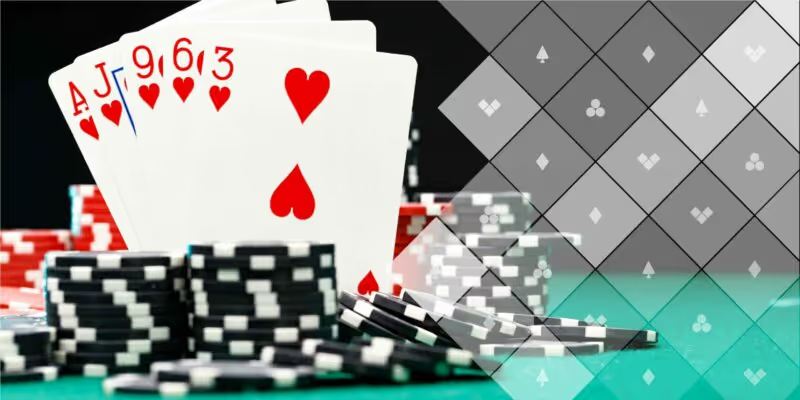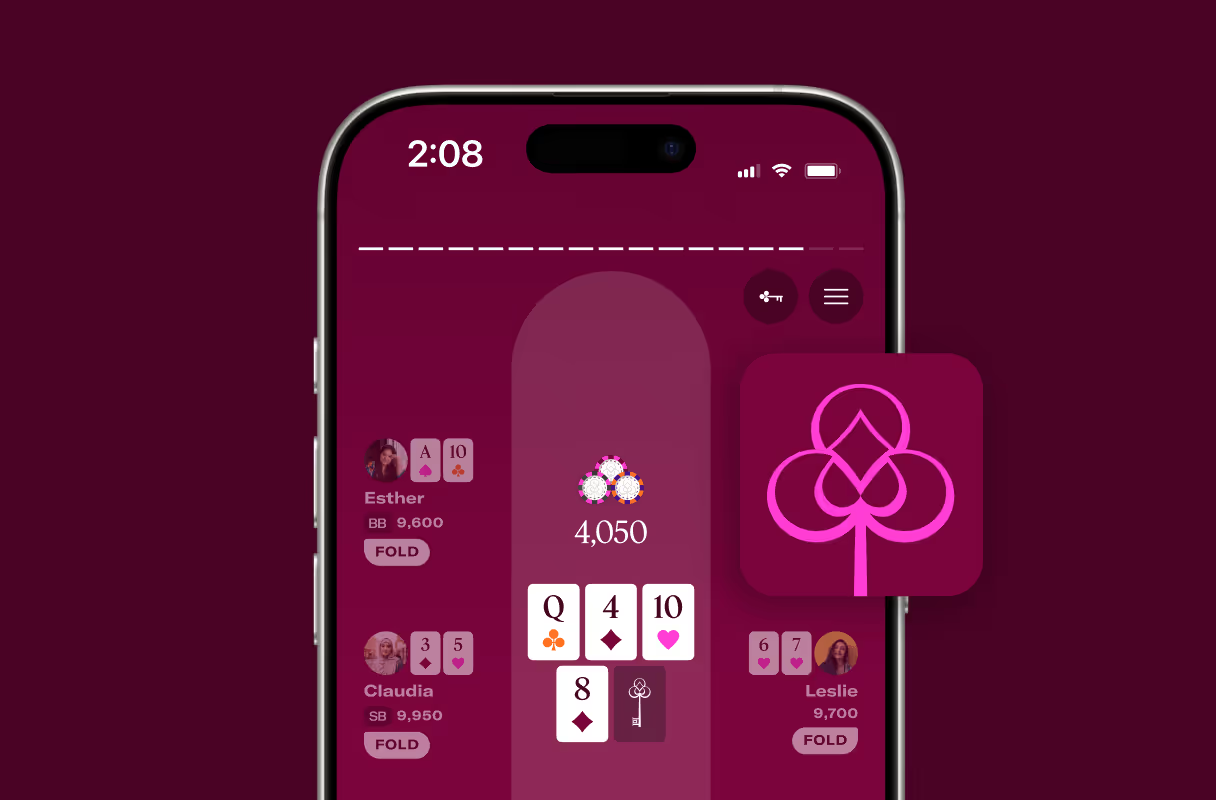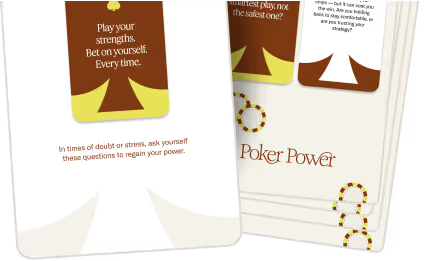“Does the story make sense?” This is the type of question a poker pro might ask themselves when considering how to respond to an opponent’s bet. So what can we deduce from our tablemates’ stories and how can we tell the story of a hand through the sizes and sequences of our betting?
A “story” in poker refers to the series of bets and checks in a hand that reveals information about the type of cards a player may have. Here’s what you can glean from each action in poker:
Checks
A “check” is when a player chooses not to bet at all. Most of the time this means that the player has a middling-strength hand that cannot benefit from betting, or a weak hand they’re giving up with.
Good players will occasionally check with strong hands so that they stay unpredictable, but generally speaking you can discount the likelihood that a player has a very strong hand if they check one or multiple times.
Small bets
A bet is considered “small” if it represents less than 50% of the size of the pot. Small bets on the flop or turn usually communicate that an opponent’s marginal hands will have a low likelihood of catching up to the bettor’s strong hands.
Small bets are particularly effective on the flop where there are still future opportunities to bet. This is because the mere threat of facing future bets with a hand that is unlikely to take the lead (if behind) is a powerful deterrent.
For example, let’s say the flop is
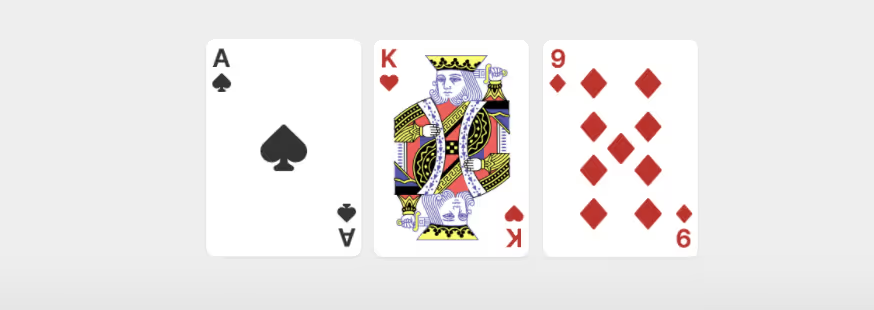
By betting small, you signal that you have at least an ace or a king (or are bluffing.) Most of the time your opponent won’t have a pair, and thus even when risking comparatively little to call, they can’t recoup their bet by winning the pot often enough.
Big bets
A bet is considered “big” if it represents more than 75% of the size of the pot. On later betting rounds, particularly rivers, it can make sense to bet 100% of the size of the pot or more! Big bets usually signal that the bettor has either a very strong hand or a bluff. Big bets are mainly used on turns and rivers to charge callers more for the impending showdown.
For example, let’s say the board looks like
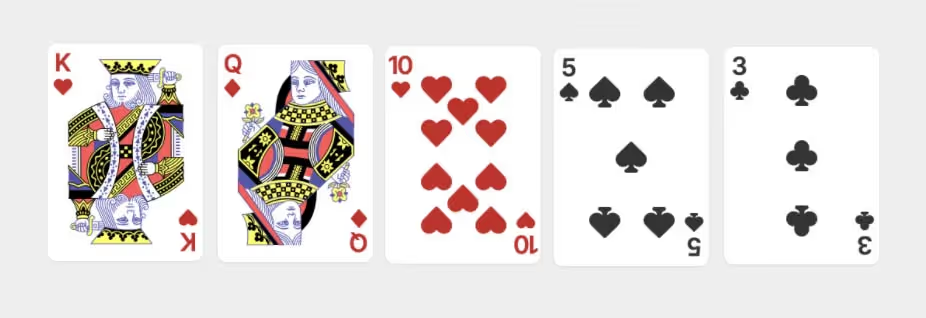
By following earlier bets with a big bet on the river, you signal that you have a very strong holding (two-pair, three of a kind or a straight) or you’re bluffing. A big bet would be particularly effective if you are more likely to have the strongest possible holdings than your opponent based on how you both played earlier in the hand.
Counterintuitively, when a player bets big they can actually be bluffing more of the time. Large bets give the caller less attractive odds, allowing the bettor to win the pot more frequently. Just remember that when you’re not bluffing, you need a really good hand to back up a big bet.
The most common stories
Bet (flop) – Bet (turn) – Bet (river): The ultimate show of strength. By betting at every available opportunity you’re saying “I could have the best hand possible.” When you bet three times as a bluff you can have missed draws or combinations of cards that make it less likely for an opponent to have a strong hand.
Check-Bet-Bet: A muted show of strength. Checking the flop but betting the other rounds signifies that either:
1. Your hand was not quite good enough to bet three times and get called by worse, but good enough to bet twice.
2. Your hand improved to become strong enough to bet.
3. You turned a great card to start bluffing on.
Check-Check-Bet: Either a somewhat good hand or a bluff. Usually if both players have checked to the river, any pair is good enough to bet. Alternatively, some hands are so bad that you can’t win unless you bluff, but it didn’t make sense to bluff earlier.
Check-Check-Check: Checking three times usually means you’ve got a weak hand, but not so weak that you absolutely have to bluff. Maybe this is an ace-high hand, or a pair lower than the lowest card on the board. It’s important to check hands of moderate and high strength occasionally to protect yourself from your opponent’s bluffs, but playing passively too often will leave chips on the table.
The value of a story
There are a variety of benefits to understanding the stories of betting lines. You’ll be able to recognize when an opponent’s plays don’t make sense and use the story framework to counter their mistakes. You’ll be able to perform a sanity check for whether your own story aligns with the cards you have. And you’ll be able to conceptualize poker in a qualitative but logical way.
So while stories in poker don’t begin with “once upon a time,” you can live happily ever after by mastering the game through Poker Power’s community lessons. We teach poker strategy to give women the tools to flip the table in poker and the workplace. Join our poker community and discover the power of poker for yourself.
